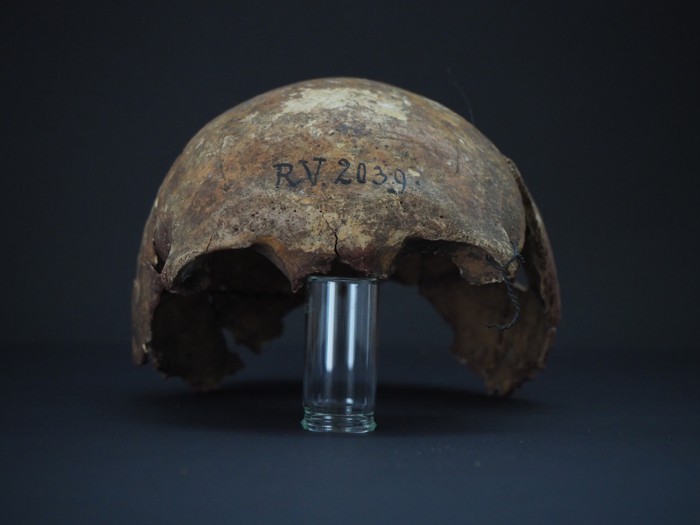
The skull of a young man buried millennia ago in what is now Latvia. Genetic material extracted from the man’s remains has revealed DNA from an ancient form of plague. Credit: Dominik Göldner, BGAEU
Genomics
A hunter-gather’s tooth yields the oldest known strain of plague
The first strain of the plague bacterium Yersinia pestis might have jumped from beavers to people, and might have caused a milder illness than later deadly versions.
Ben Krause-Kyora at Kiel University in Germany and his colleagues extracted DNA from the tooth of a male hunter-gatherer who was buried more than 5,000 years ago in what is now Latvia. Sequencing revealed genomic material from a strain of Y. pestis — the oldest known.
The man was carefully buried, and was the only one of four people interred at the site whose remains held traces of plague DNA. This shows that the disease was probably not a severe, contagious illness that killed within days, the authors conclude. They argue that beavers (Castor fiber), which carry a related bacterium and whose remains are abundant at archaeological sites in the region, are the most likely animal host.
Past research has suggested that plague outbreaks caused by ancient Y. pestis strains might have caused deadly epidemics in Europe 5,000 years ago. But the latest work offers evidence to the contrary, the authors say.
"gather" - Google News
June 29, 2021 at 02:00PM
https://ift.tt/3x6UDDw
A hunter-gather's tooth yields the oldest known strain of plague - Nature.com
"gather" - Google News
https://ift.tt/2Sqdbwp
https://ift.tt/2Yjhqxs
Bagikan Berita Ini














0 Response to "A hunter-gather's tooth yields the oldest known strain of plague - Nature.com"
Post a Comment